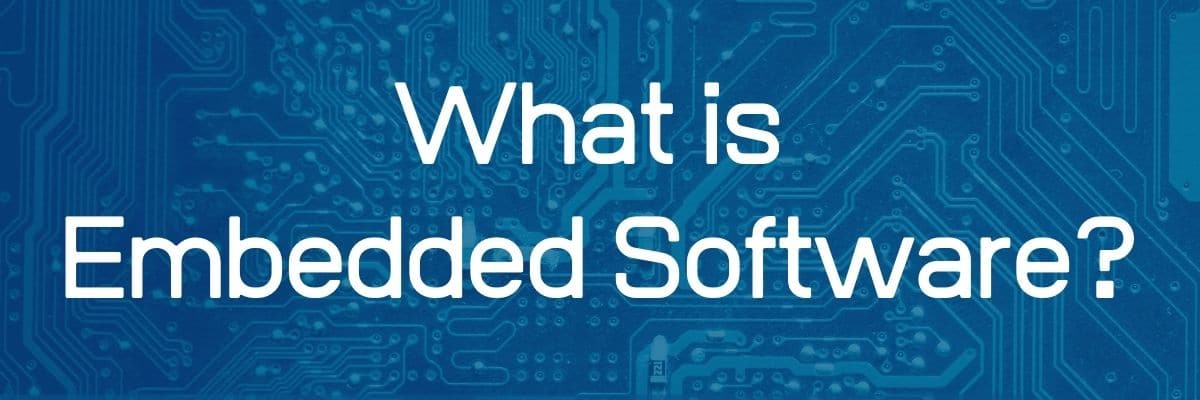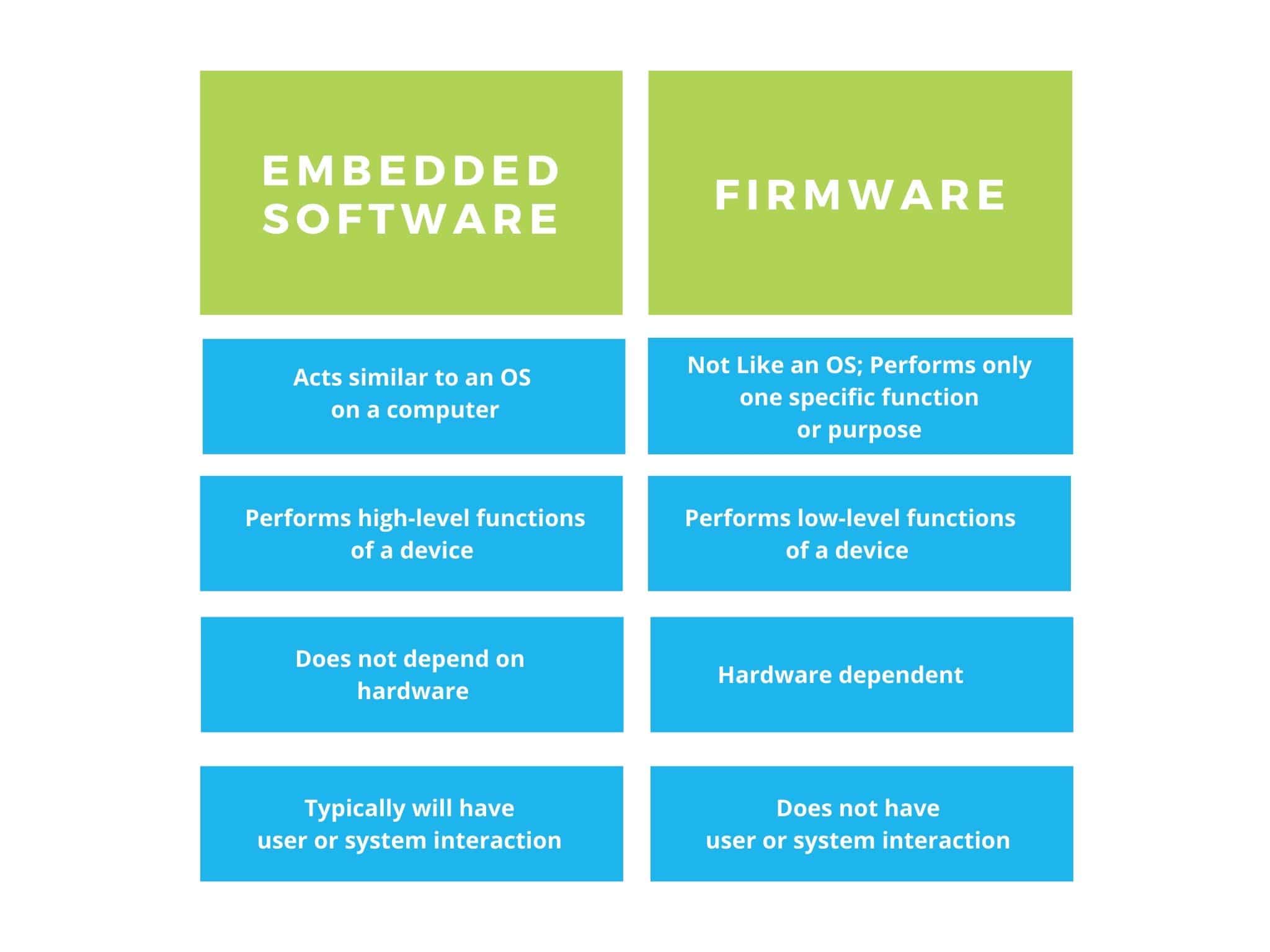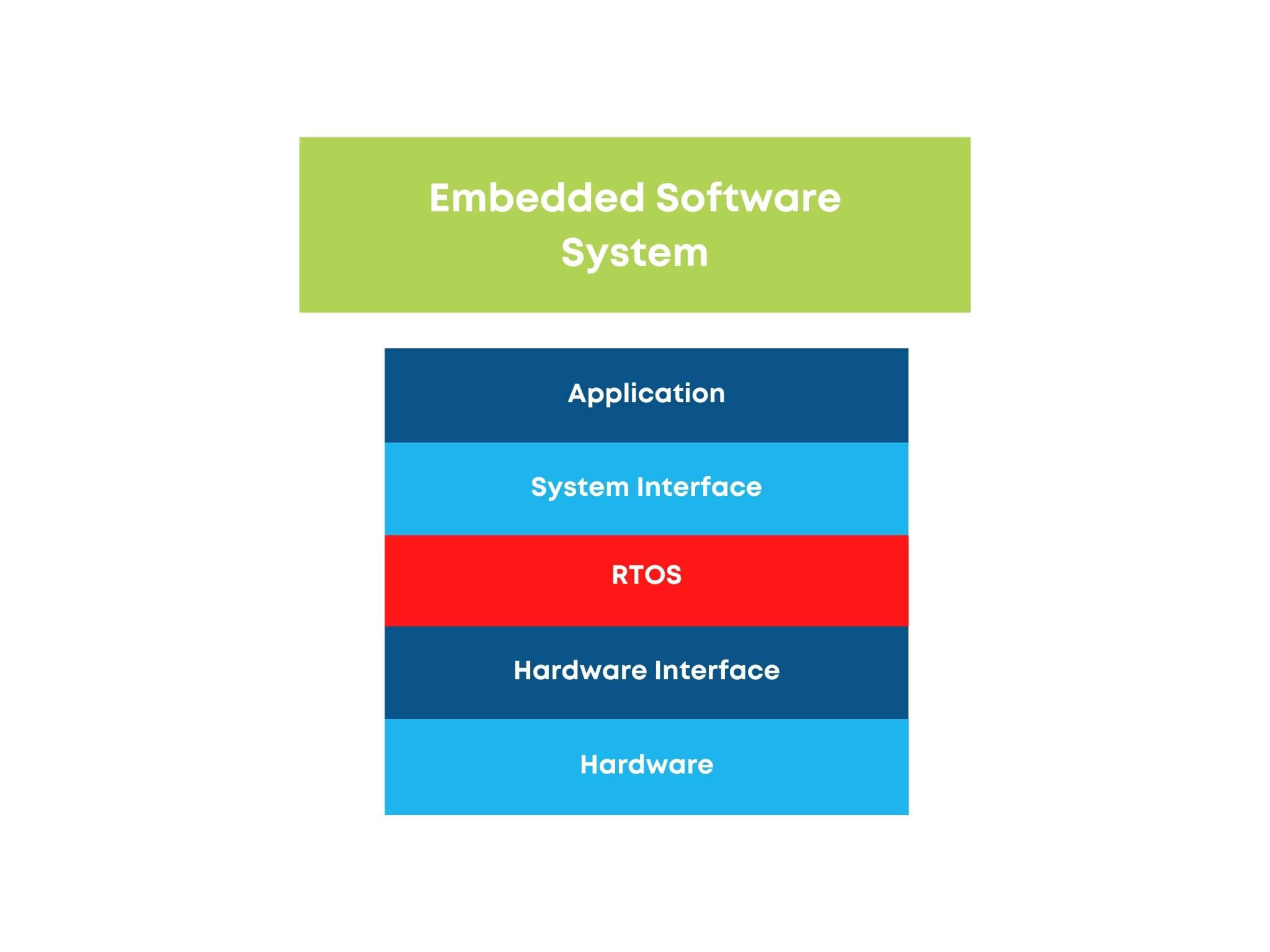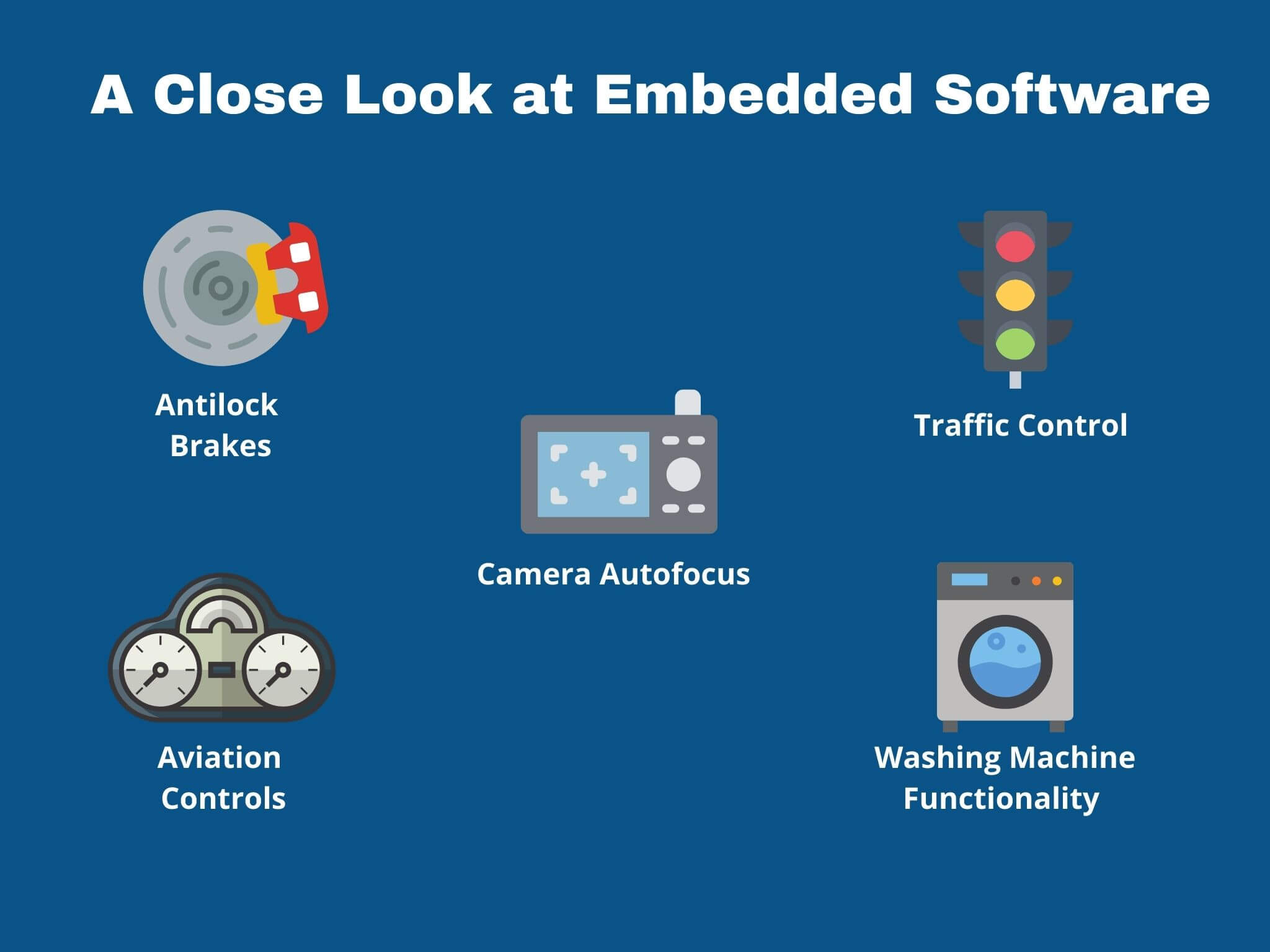
We live in a world surrounded by electronic devices and systems, from our personal smartphones and automobiles to complex factory machinery. If you take a closer look into these electronically enabled “things” (to simplify… let’s call them “devices”) there are many electronic components working together to control and provide the functionality that bring these things to life.
But the hardware would sit there and do nothing, if it wasn’t for the brains of the outfit; the “Embedded Software.”
What is Embedded Software?
Embedded software and firmware are the code that is developed, compiled and flashed into the hardware to allow devices to perform their specific functions. In fact, the very computer you are reading this with, is built with firmware inside, such as the BIOS that controls the motherboard for your PC, which is responsible for booting the OS and controlling the peripheral devices on the motherboard — just to name a few of the numerous functions it provides. That said, the application software on your PC is not deemed embedded software, as the user can select what programs to download, load and run on the PC.
What’s the difference between “embedded software” and “software” that you use every day on your PC? Software that you know so well, such as Office 365 or Photoshop, are applications that run on an OS (operating system) within a computer, such as Windows 10, while embedded software typically runs on embedded devices (with or without a user interface) and they either operate with or without an OS.
Embedded software is typically pre-installed in a device and not loaded and executed by users. On boot-up, the device loads its operating environment and then executes its embedded software application to control the device. This includes devices that support the ability to communicate with the outside world. To do so, they need the hardware, embedded software and firmware to allow them to support specific communication and network protocols.
Embedded Software vs. Firmware
Embedded software is not to be confused with “firmware.” The firmware in a device is the fixed portion of the device’s low-level software that can’t be modified or executed by a user and is “flashed,” meaning it is burned (programmed) to a FLASH chip that stores the firmware executable image. Firmware’s primary function is to boot a device and control its hardware peripherals, while in contrast, embedded software‘s function is the overall operation and control of the device to perform its specific function.

How Embedded Software Works
Each device will have its embedded software developed using a specific programming language, which is typically “C” or “C++.” Higher level devices can also support Python, JavaScript and other languages. The embedded software can include its operating environment and application software. More complex devices will operate using commercially available operating systems such as FreeRTOS, uC/OS, ThreadX, VxWorks, and many other variants.
Embedded software is developed using specific tools as shown below, each performing a different role to help create and build the software.
Editor
The first tool used to create the embedded software, is an “editor,” which is part the development environment where a programmer writes the software in the programming language of choice, which becomes the source code for the device. We personally use our own editor tool, NetStaX protocol stack source code solution, which caters to several protocols including EtherNet/IP, DeviceNet, ControlNet, CANopen, PROFINET and J1939.
Complier
A complier transforms the code into low-level executable code that is specific to the target microprocessor hosted by the device.
Assembler
An assembler converts human-written assembly code into machine language. Note: the difference between a complier and assembler is that the complier directly converts the code, while an assembler does not.
Debugger
A debugger is a tool that allows a developer to thoroughly go through the code and makes sure there are no errors. If there are issues found, the debugger will highlight them to be fixed. We use NetStaX development and testing tools to perform end-of-line and field testing.
Linker
A linker is another tool that pulls together and formats low–level executable code in a manner so that it executes properly on a target device.
The Embedded Software System
Depending on the device or system that the embedded software is run on, the software components can vary depending on the complexity of the system. Here is an example of a typical embedded software system:

Application: The application–level software that controls the device’s specific function.
System Interface: The interface to the OS and hardware provided by system libraries used by the application.
RTOS: Short for “Real Time Operating System,” RTOS is the operating environment in which the application software runs. On some systems, referred to as “Baremetal,” there is no operating system, and the application runs direction above the hardware.
Hardware Interface: Low–level firmware and driver software required to boot the device and control peripheral hardware devices.
Hardware: The microprocessor and peripheral chips on a circuit board along with the FLASH memory that contains the embedded software and firmware and RAM which is used during runtime of the device.
Examples of Embedded Software
We have defined what embedded software is and that it varies significantly based on the device it is controlling. Here are a few more examples of embedded software use and functionality:
- The anti-lock brakes of your automobile
- The motion detector of a security camera
- The auto-focus on your digital camera
- The disc drive of a computer
- The industrial automation functions of a factory
- The control functions of a video game controller
- The smart lighting control in homes
And so much more!

What We Do with Embedded Software and Firmware
Our embedded software development services cover everything from simple single board devices to complex, network connected, distributed, real-time systems. We have an array of capabilities in embedded software development services to assist you in getting your devices and systems developed in minimal time and cost effectively.
Our embedded software capabilities include:
- Custom Applications
- Middleware
- APIs
- Drivers
- Communications/Network Connectivity Options
- Configuration, Testing and Validation Tools
Our team of experts has extensive experience in the development of software for embedded devices. In fact, Pyramid Solutions has been providing the utmost value of software solutions to our customers since 1990.
